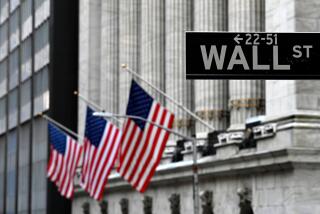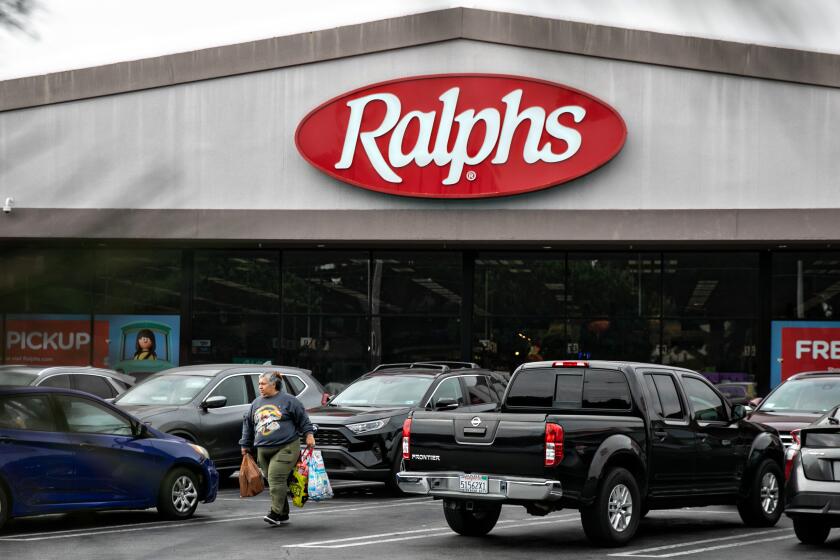Junk Bond Portfolios Have Been Scintillating
- Share via
If you adhere strictly to the idea that it’s best to buy on bad news and sell on good, then this column won’t hold much appeal. It deals with high-yield or junk bond mutual funds, which suffered through their darkest days two years ago and now are on the comeback trail.
The turnaround has been a dramatic one for junk portfolios, which invest in lower-rated, speculative debt.
Their 16% average total return through the first nine months of this year is the best showing of any bond fund group and the second best overall, including stock investments, according to Morningstar Mutual Funds, a Chicago research publication.
And that follows a blistering 37% surge for the junk bond group in 1991.
Though the big gains are probably over, junk bond portfolios still offer zip for investors who can tolerate volatility. The key is to recognize high-yield funds for what they really are: stock-bond hybrids.
“These are investments that trend more with stocks than with the fixed-income market,” says Ed D’Alelio, who is in charge of high-yield bonds for Putnam Funds in Boston. “They have a lot of equity characteristics.”
Anyone considering a junk bond fund these days has the benefit of hindsight to appreciate the risks involved. All you need do is look back at the 1989-1990 period, when a confluence of problems broke around the high-yield market.
The slowing economy led to an increase in corporate defaults and bankruptcies. Drexel Burnham Lambert, the brokerage that dominated the junk market, failed.
And there were ample fears about what some weaker, less-liquid bonds were really worth, since they didn’t trade often enough to be accurately priced by the mutual funds that held them.
A lot of junk bond shareholders really didn’t understand what they owned. For the two-year period, the average high-yield portfolio lost 12.9%, including interest income, according to Morningstar.
“It’s not like everything dropped to zero,” says D’Alelio. But it was enough to scare the heck out of people who expected stability in a fixed-income investment.
Looking forward a couple of years, many bond market watchers believe that the high-yield funds offer above-average potential, though certainly nothing like the sizzling returns of 1991. “Clearly the easy money has been made,” says David Breazzano, co-manager of Fidelity Capital & Income Fund.
But with typical junk issues yielding in the range of 10% to 12%, well above the 6.3% payout on 10-year Treasuries, investors are being rewarded for taking greater risks.
In recent years, this yield “spread” between junk and top-quality bonds has ranged from a little more than one percentage point to nearly 10.
Besides high yields, junk-fund investors appear to be facing a less risky situation than two or three years ago. A gradually improving economy should translate to fewer bankruptcies and defaults.
D’Alelio figures that between 3% and 3.5% of junk issues will stop making interest or principal payments this year, compared to a peak 9% default rate in 1991.
“Defaults are still absolutely a concern, but not like two years ago,” says Ralph Norton, editor and publisher of the Bond Fund Advisor newsletter in Woburn, Mass. “A lot of the bad apples have been shaken out of the tree.”
Weaker companies have also been helped by the general trend toward lower interest rates, which has enabled many firms to refinance by replacing high-cost bonds with less expensive debt.
An additional reason to consider investing in a high-yield fund is that junk securities aren’t as sensitive to interest-rate fluctuations as other bonds, experts say.
Junk bonds aren’t immune to rising rates, but their prices tend to move more according to the underlying prospects for each company and the health of the economy. By contrast, with a high-quality bond such as a Treasury issue, there’s no default danger--so interest rates exert more of an impact. “If you think interest rates might go up, you certainly don’t want to be in high-grade bonds,” says Breazzano.
On the other hand, you probably don’t want to stake most of your fixed-income assets in a speculative area like the junk bond sector. The L/G No-Load Fund Analyst, a San Francisco newsletter, recommends a 15% position in a high-yield portfolio to complement other stock and bond holdings. Specifically, the newsletter recommends Financial Bond Shares’ High-Yield Portfolio (no load; 800-525-8085).
Junk funds that have been given top ratings by Morningstar include Fidelity Capital & Income (no load; 800-544-8888), Fidelity Advisor High Yield (4.75% load; 800-843-3001), Merrill Lynch Corporate Bond High Income (4% load; 800-637-3863), Nicholas Income (no load; 414-272-6133) and Putnam High Yield (4.75%; 800-225-1581).
Norton recommends up to a 15% junk weighting for experienced investors, but he emphasizes that the funds aren’t suitable for people coming out of certificates of deposit for the first time. “They only make sense if people recognize the extra risks.”
Those risks are generally better understood today by both investors and brokers--a fortunate byproduct of the slump of 1989-1990. “All the bad press that junk bond funds received has educated more people about the dangers,” Norton says.
More to Read
Inside the business of entertainment
The Wide Shot brings you news, analysis and insights on everything from streaming wars to production — and what it all means for the future.
You may occasionally receive promotional content from the Los Angeles Times.








